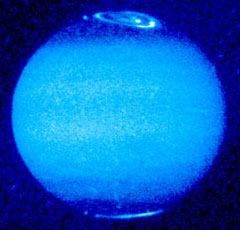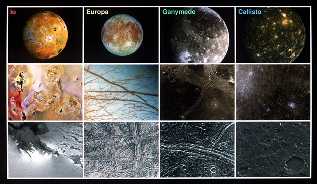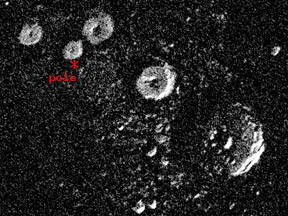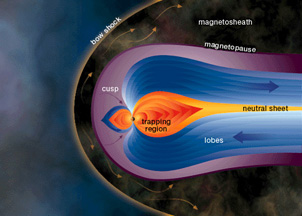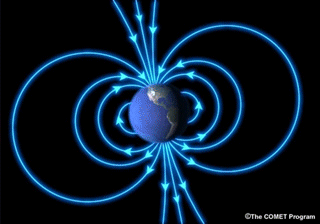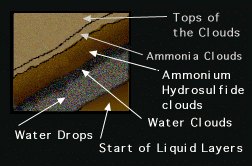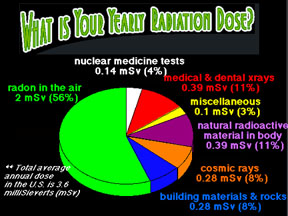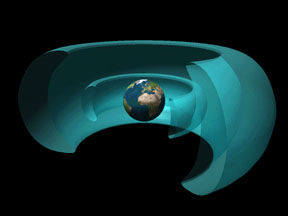Click on image for full size
Image courtesy of J. Clarke and G. Ballester (U. of Michigan), J. Trauger and R. Evans (JPL) and NASA.
The Poles of Jupiter and its Moons
Several interesting phenomena are found at the poles of Jupiter, the largest planet in our Solar System. Three of Jupiter's four large "Galilean" moons are ice-covered and thus reminiscent of Earth's polar regions. Io, the fourth Galilean moon, has volcanoes near its poles... and "Northern Lights" in a most peculiar location!
Unlike Uranus, which is "tipped over on its side", Jupiter is pretty much an upright planet. Jupiter's spin axis, which defines the locations of its poles, is tilted just 3.1° away from vertical. That is a much smaller tilt than Earth's 23.5° angle. Only Mercury, which is tipped less than one-tenth of a degree, is more upright than Jupiter. Jupiter's magnetic field is, however, tilted a moderate amount. The giant planet's dipole magnetic field axis is tilted 9.6° away from its spin axis, which is comparable to the 11° tilt of Earth's magnetic field.
Unlike Earth, which is rocky and relatively rigid, Jupiter is a deformable ball of gas and fluids. Though Jupiter is the largest planet in the Solar System, it rotates more rapidly than any of the other planets. Its day is just under 10 hours long. Jupiter's fast spin and "squishy" consistency cause the planet to bulge outward at its equator and pull inward at the poles. Jupiter's equatorial diameter is, therefore, about 7% larger than the distance between its poles.
Jupiter has brilliant auroral light shows (like Earth's "Northern Lights"). Earth's aurora are most active during space weather "storms". Jupiter's aurora are, by contrast, a more constant and enduring feature generated by the giant planet's powerful magnetic field and intense radiation environment. As particles of radiation bombard Jupiter's polar atmosphere, generating auroral lights, they chemically alter atmospheric gases, creating a haze in the Jovian stratosphere.
Earth's poles are far colder than its tropics, but the temperatures on Jupiter do not vary with latitude. Much of Jupiter's warmth comes from internal heating instead of sunlight, so its poles are just as warm as its equator. Earth and Jupiter are alike, however, in having stormy poles: they are the only two planets so far observed to have lightning near their poles.


